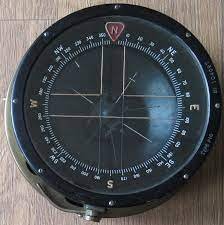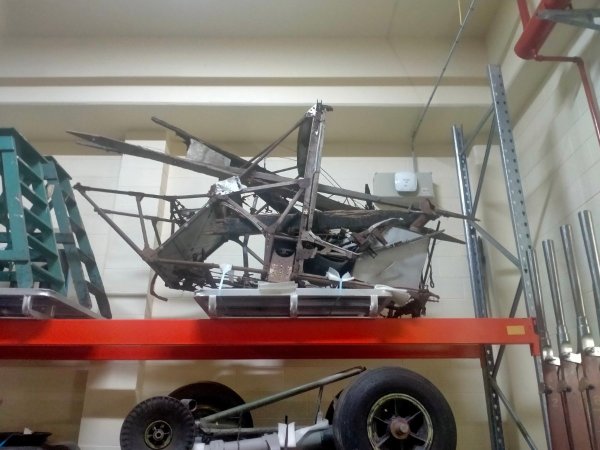-
Posts
5,297 -
Joined
-
Last visited
-
Days Won
78
Content Type
Profiles
Forums
Gallery
Downloads
Blogs
Events
Store
Aircraft
Resources
Tutorials
Articles
Classifieds
Movies
Books
Community Map
Quizzes
Videos Directory
Everything posted by old man emu
-

Things you see on OzRunways.
old man emu replied to Old Koreelah's topic in Instruments, Radios and Electronics
From some of these replies, I'm wondering how many people actually leave the vicinity of their home aerodromes. -
Got ya. Apart from the immediate rescue of SURVIVORS, or the control of fire, no one should enter, or remain in the site of an incident if they have no investigative duties. A big problem I found with traffic accident investigation was the overzealous use of fire extinguishing materials by both the Fire Brigade and RFS. That earned then the name "Evidence Eradication Team". Firies can only go into action to quell an existing fire, but not do anything against the possibility of fire except to prepare and watch. However, I have no objection to members of the public recording the site before the arrival of investigators. Often those recordings save evidence that is otherwise lost.
-

Things you see on OzRunways.
old man emu replied to Old Koreelah's topic in Instruments, Radios and Electronics
“The condition upon which God hath given liberty to man is eternal vigilance,” John Philpot Curran, given in Dublin in 1790. As Hamlet was won't to say, " - ay, there’s the rub!". How precise do we have to be with cross- country Day VFR flight? Do we need the data overload that Garfly quotes (albeit humorously)? In general, towns in the closer settled rural areas are about 20 nautical miles apart, simply because that was a good day's horse ride, or they are on the banks of a watercourse. So if you "mistook town A on the WAC for town B on the earth", you either have been flying in a windstorm, or haven't checked your flight plan earlier in the flight to confirm its reliability. I recall an incident told by Arthur Butler about his 1931 flight from England to Australia in a Comper Swift. He was about to head off away from land and over a long watery stretch. Before he did so, he made several short out and back runs over his departure point to confirm wind drift. His only navigational aid was this type of compass, wobbling away under the instrument panel - and at night. -
Actually my comment was not in relation to that. The Coroner, aided by the police investigation on the Coroner's behalf, welcomes any reliable information when conducting an Inquest. The Coroner is seeking factual information and if it comes from experienced sources, all the better. My comment harkens way back to the fundamentals of Management Systems which can be identified in this simple diagram: An organisation creates a plan or procedure aimed at attaining a result. Then it does (implements) that plan or procedure. After implementation the results are monitored (checked) to see if they match the expectations, and decisions made to keep the status quo, or to modify the plan or procedure and go around the cycle again, again and again until there no more reasonable improvement can be made,or the goal of the plan is reached . Does that sound like Harvard School of Business mumbo-jumbo? Hardley. You did exactly that when you made your cuppa this morning. Failure to be involved in the investigation of incidents breaks the cycle and precludes any further improvement on the one hand, and on the other opens the door to declining standards.
-

someone parked a chopper in the roof of a house
old man emu replied to BrendAn's topic in Aircraft Incidents and Accidents
I audit the Quality Control Manual of a mob that maintains these machines. That means I have to delve into work packages to see that the rules are being followed. Compared to a work package for a fixed-wing aeroplane, one for a chopper is nearly as thick as War and Peace. And one of the requirements is that the maintenance data used has to be shown to immediately current at the time the work was commenced. Not only choppers expensive to manufacture and purchase, the need to continually undergo training required to maintain them is a massive cost to the organisation if it wants to keep in business. -

someone parked a chopper in the roof of a house
old man emu replied to BrendAn's topic in Aircraft Incidents and Accidents
"It plummeted from the skies and the witness on the roof could see the wide-eyed terror of the pilot as he struggle for control." Strewth, Capt W.E. Johns has nothing on me. -

Radio Operator's Licence
old man emu replied to old man emu's topic in Student Pilot & Further Learning
You are correct, I just didn't want to get up and go find my logbook to get the correct name. -

Things you see on OzRunways.
old man emu replied to Old Koreelah's topic in Instruments, Radios and Electronics
That's what I don't like about the idea of using a screen instead of a paper map. Screens have become so ubiquitous in so many applications that people live "heads down", which is OK if you are a Bingo addict, but not when you are on the move. Screen devices have changed the way Mankind has navigated since it took its first steps out of the cave. Screens say, "You are here". A paper map says, "You've got to get to this landmark. Look for it". So the map-reader is always looking outside for the landmark. The use of screens for navigation causing pilots to rely on them instead of their own observations reminds me of the wording we Highway Patrol Police used when giving evidence in a radar detected speed matter: "I observed the vehicle for a period of not less than three seconds and based on my experience I estimated that the vehicle was exceeding the speed limit applicable to that length of public street. I released the radar and saw the numerals ### appear in the Target window." In other words, "See. Compare. Confirm." In my opinion, that's the way to navigate. Of course, that method relies on the fact that a flight plan has been prepared beforehand, and consulted during the flight. -

Radio Operator's Licence
old man emu replied to old man emu's topic in Student Pilot & Further Learning
Just an update on going Part 61. It was simple to apply for the change. Download and print the application form from the CASA website Scan and print all the pages of my CAR 5 licence, including Radio Operator's licence Scan relevant pages from my logbook that show certification for solo, RPPL test and lifting of RPPL restriction, systems endorsements and ratings, and recent experience (wow 10 years ago) Obtain passport-sized photograph and have the photograph certified as being my ugly mug Fill out the approval for CASA to suck $25 from my bank account Declare that I hadn't told any porkies on the application document Put everything in an envelope and drop it in the mail. -
Aviation has always been strong in the USA, along with a strong culture of invention. Governments in the USA seem to have adopted a "guiding hand" approach to keeping things tidy, rather than an iron fist of prohibition. You also have to realise that with a population of 332 million, it only takes a small percentage of the population to take up an activity for the overall numbers involved to appear very large to us with our minute population.
-

PLANE IN POWER LINES BALTIMORE 28/11/22
old man emu replied to red750's topic in Aircraft Incidents and Accidents
You are right, but you know our liking for gallows humour. -

PLANE IN POWER LINES BALTIMORE 28/11/22
old man emu replied to red750's topic in Aircraft Incidents and Accidents
That'll teach him about flying short circuits. -

On the stale unleaded petrol (gasoline) myth
old man emu replied to RFguy's topic in Engines and Props
Whoo! Whoo! Step away from the container and assume the position! -

On the stale unleaded petrol (gasoline) myth
old man emu replied to RFguy's topic in Engines and Props
There is a class action against BMW https://www.law.com/international-edition/2022/10/21/australia-class-action-firm-plans-cases-against-bmw-and-mercedes/?slreturn=20221026163158 and a similar one against Toyota for schemes in which devices were installed into diesel engines to manipulate lower nitrogen oxide (NOx) emission levels when under testing in order to pass regulatory requirements. “Consumers have likely been misled, many likely having purchased these vehicles for the environmental benefits,” Malouf said. “I personally am, and without doubt, all class members are, surprised and very dismayed that major international companies who purport to be acutely environmentally conscious with worldwide brands would allow environmental damage on such a major scale,” he continued. “It is an outrage and most importantly GMP Law intends to pursue the maximum punitive damages possible as a future deterrent.” -

Can you do it?
old man emu replied to old man emu's topic in Aircraft Building and Design Discussion
Dealing with the plans themselves won't be a problem. The problem will be the extent of their coverage. Interestingly, there are sheets also for his first plane, and for the Avro Avian. Since he worked on the Avro 504 and Avian, as part of his day job I wonder if, he could have used those designs for aerofoil shape. I was only skimming through the material to get an impression of what was available, but I did find an entry in a notebook that identified Australian timbers for various components. So maybe the plane won't need to be spruced-up! -

Radio Operator's Licence
old man emu replied to old man emu's topic in Student Pilot & Further Learning
I spoke to an instructor who gave me the drum on what I had to do. Basically it's a matter of filling out a form; photocopying relevant logbook entries; providing an ID photo. And of course paying the $25 fee. I don't even have to prove that I can converse in the King's English. Now I'll just wait until they change the rules and my Heavy Vehicle driver's licence medical will suffice to allow me to commit aviation. -

Can you do it?
old man emu replied to old man emu's topic in Aircraft Building and Design Discussion
Definitely wood control surfaces and wing. The problem is to determine what aerofoil design he used. I've seen one of the blueprints. It was in good condition - better than the image posted earlier in this thread. Who knows what I will find amongst those drawings. I hope that as I go through his notebooks I will find more of his research material. From what I've seen of his trade student notes, there's some good shit amongst it that has probably been forgotten over the years. If nothing else, I can resurrect that info. -

Can you do it?
old man emu replied to old man emu's topic in Aircraft Building and Design Discussion
I think that I will change my idea. If it was unpacked from the pallet, it could be cleaned up and what there is displayed to show the construction method. It looks like all that is there is from the rear of the seats to the front of the enagine mount. -

Can you do it?
old man emu replied to old man emu's topic in Aircraft Building and Design Discussion
-

Anything Handle Like a Warrior II
old man emu replied to kevinblack's topic in Aircraft General Discussion
Isn't the stability of the PA-28 versus that of the Cessna due to the pendulum effect of the location of the fuselage being under the wing of the Cessna whereas the PA-28's fuselage is above the wing? -

Anything Handle Like a Warrior II
old man emu replied to kevinblack's topic in Aircraft General Discussion
Why is a PA-28 a soft lander when compared to a Cesspit? Ground effect. That couple of feet difference is distance from the ground has got to be a factor. The PA-28 has a more solid "air bag" under its wing. -

PA-28 crash near Bankstown 19/11/2022
old man emu replied to red750's topic in Aircraft Incidents and Accidents
I spoke to an instructor at Bankstown today. He had seen teh flight record and was of the opinion that the many earlier circuits were typical of an instructor making sure that the student was up the the standard to go solo. The instructor also told me that it was really windy on the day, so if you follow the track traces, you can see that he was handling the wind quite well. The student did well. Haven't we talked about the dangers of stalling when making turns in teh circuit at low speed and going from a mostly tailwind to a crosswind when turning Base? What would have happened if he made that second turn into the direction of a normal Final for the active runway? He didn't have much distance to use to get the plane onto the cleared space. Ther are no pictures of the point of touch down, but seeing that the aircraft continued its landing roll, he must not have slammed it on. The marks you can see across the unsealed racing track are symptomatic of locked whels sliding on a low friction surface. Poor bastard. I reckon he did OK. -

Can you do it?
old man emu replied to old man emu's topic in Aircraft Building and Design Discussion
UPDATE: If the airframe is fit for restoration, (and I can wrest it from teh clutches of the museum) I have got an agreement for the restoration be to done under the umbrella of licensed maintenance organisation. The organisation will provide instruction to volunteers where required and then inspect and sign off the work. I also have an ageement for any welding to be done by a CASA licensed person. Pending an inspection of the remains, a decision will be made about progressing towards satisfying the vision.









